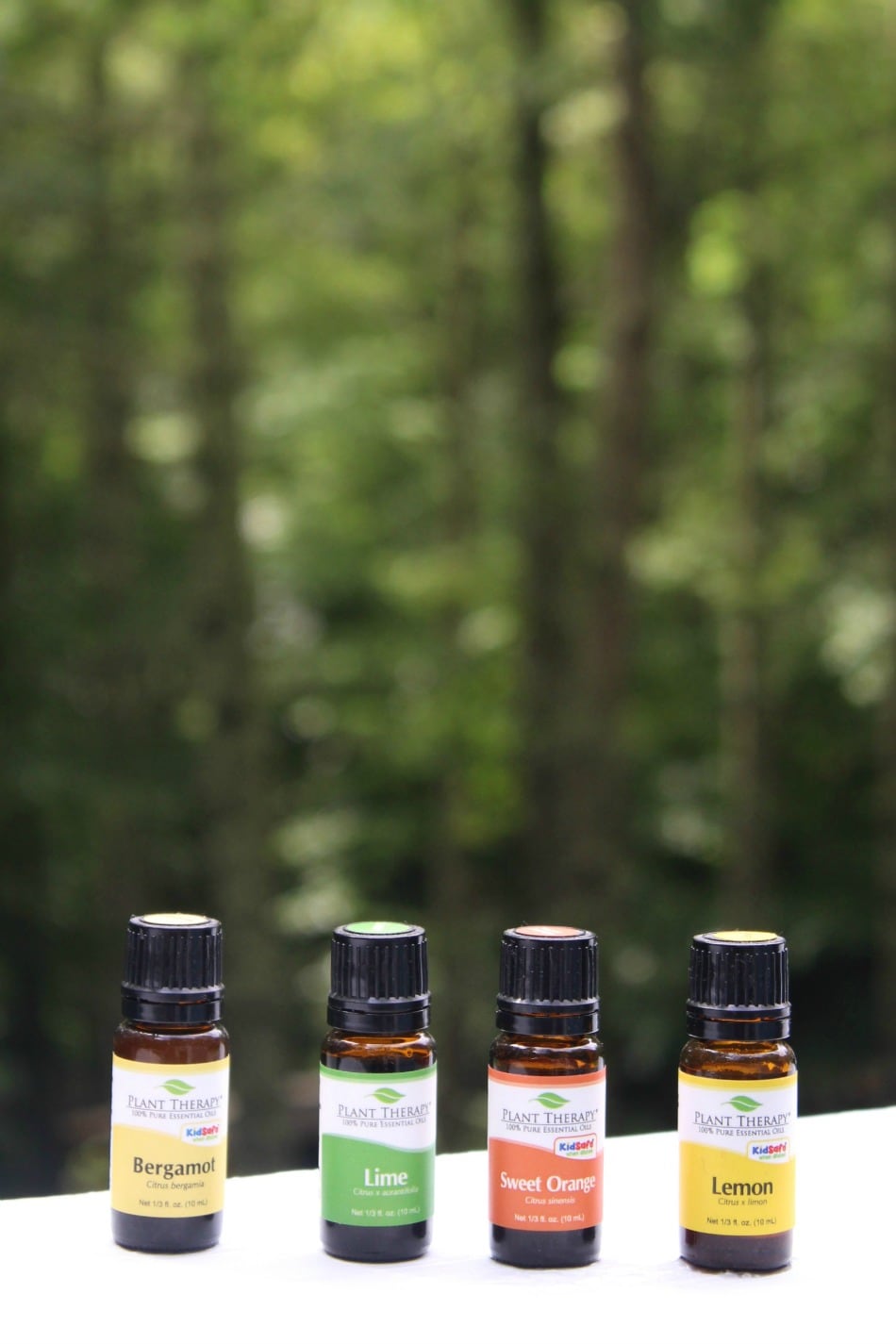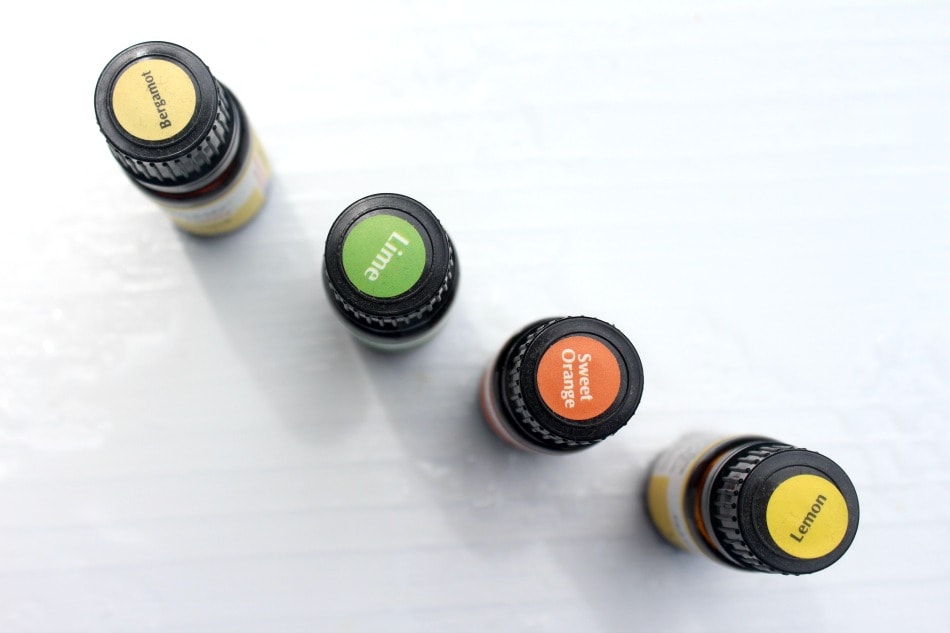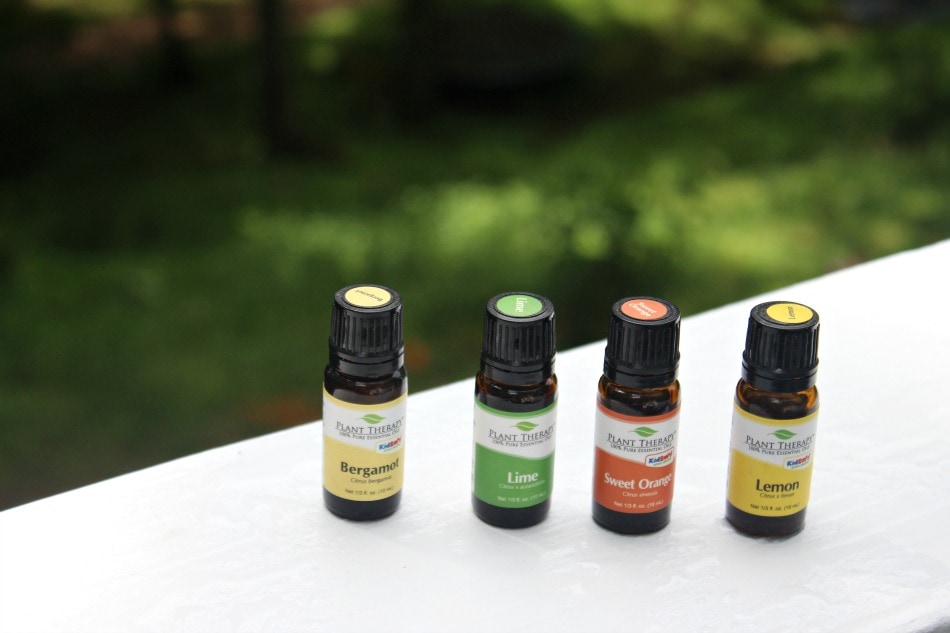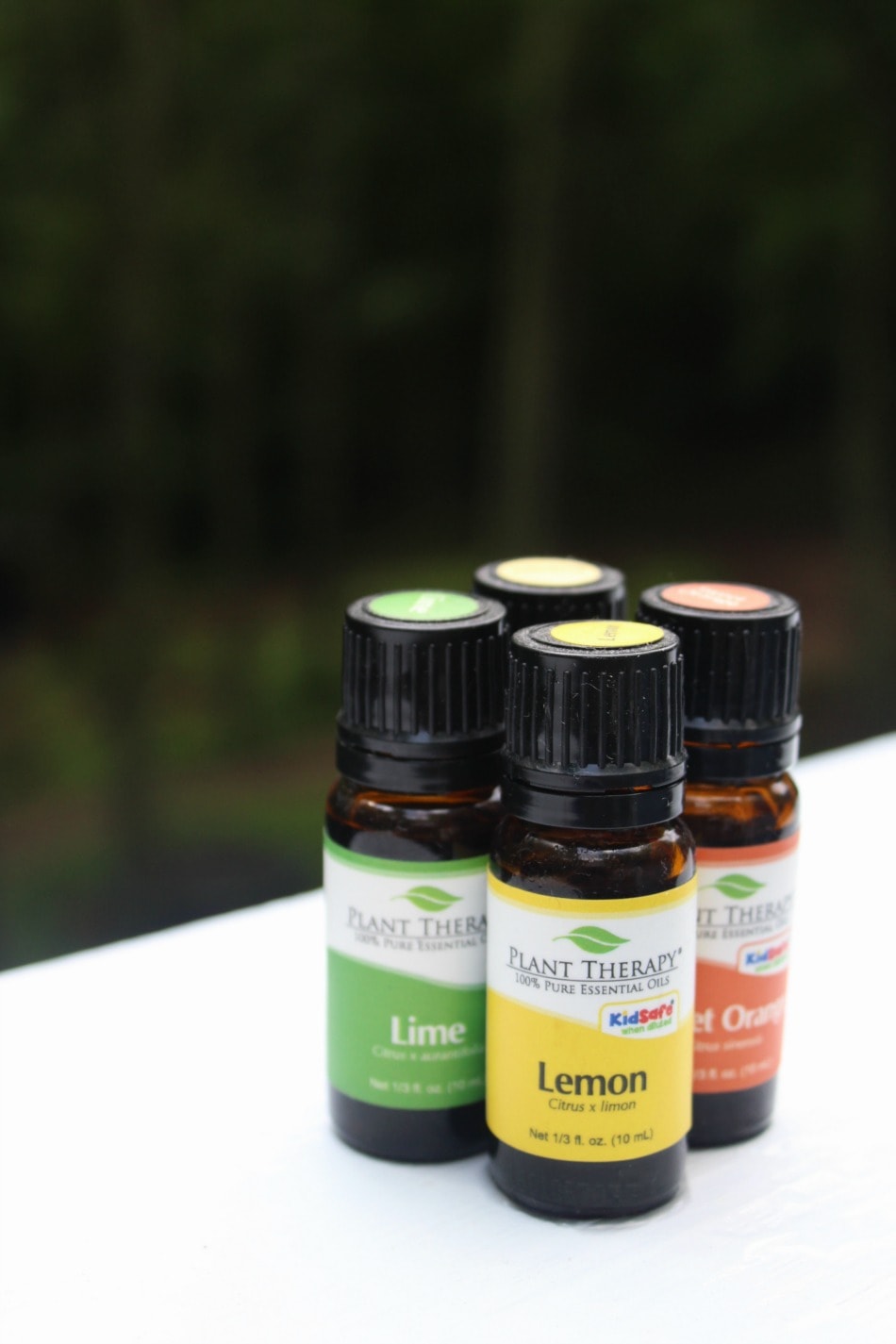
I’ll admit it. When I first started using essential oils, I thought because they were “natural,” they were safe. I did very little research on them other than looking into the basics of how to use them. Thankfully, I mostly used them in homemade cleaning products and DIY skin care recipes, so most times they were properly diluted. No unfortunate peppermint bath experiences here, thank goodness!
Over the years, I’ve become a bit of a stickler for safe essential oil use, especially now that I know more about them. Essential oils are concentrated and strong. Not only that, but it often takes a lot of a plant to make a small amount of essential oil, and I want to be a good steward of the earth’s resources. In my efforts to use essential oils safely, one of the most recent safety concerns I’ve come across is phototoxicity.
If you’re familiar with essential oils, then I’m hoping you already know about phototoxic essential oils and are taking safety measures to avoid phototoxicity. However, if this is something you are not familiar with, I’d like to briefly explain what phototoxicity is, which essential oils are phototoxic, and how you can avoid it.
Phototoxicity 101
Phototoxicity can occur when constituents in certain essential oils (furocoumarins, most often) react when the skin is exposed to UV light. According to aromatherapist, Sheri Siegmund-Roach, the constituents in the essential oil binds with DNA in the skin cells and, once exposed to UV light, cell death and tissue damage occur (Siegmund-Roach, 2016).
Phototoxic reactions can occur anywhere from 1-3 days following exposure to UV light. These reactions often result in inflammation, swelling, blistering, and burned skin. Phototoxic reactions only occur when these oils are applied topically at specific dilutions (more on that below) and exposed to UV light within a 12-18 hour period.
Using phototoxic essential oils in diffusers and personal inhalers are fine. Some people even say these types of oils can be safely added to personal diffuser jewelry. However, I’d use some caution here, especially when it comes to jewelry that comes in contact with your skin such as lava beads and leather bands.
It is also believed that using phototoxic essential oils in skin care products that are washed off, like sugar scrubs, soaps, and shampoos, pose no risk of phototoxicity.
Phototoxic Essential Oils


So which essential oils are considered potentially phototoxic? Glad you asked. The following is a list of phototoxic and potentially phototoxic essential oils as well as a list of citrus essential oils that are not known to be phototoxic.
Phototoxic Essential Oils
- Angelica root (Angelica glauca) essential oil
- Bergamot (Citrus bergamia) essential oil, cold pressed
- Bitter orange (Citrus x aurantium) essential oil, cold pressed
- Cumin (Cuminum cyminum) essential oil
- Lemon verbena (Aloysia triphylla) essential oil
- Fig leaf (Ficus carica) absolute
- Grapefruit (Citrus paradisi) essential oil, cold pressed
- Lemon (Citrus limon) essential oil, cold pressed
- Lime (Citrus aurantifolia) essential oil, cold pressed
- Mandarin leaf (Citrus reticulata) essential oil
- Opopanax (Commiphora erythraea) essential oil
- Rue (Ruta graveolens) essential oil
- Taget (Tagetes minuta) essential oil and absolute
Potentially Phototoxic Essential Oils
- Clementine (Citrus clementina ) essential oil, cold pressed
- Combava fruit (Citrus hystrix) essential oil
- Skimmia (Skimmia japonica) essential oil
- Angelica root (Angelica archangelica) absolute and CO2
- Celery leaf (Apium graveolens) essential oil
- Celery seed (Apium graveolens) absolute
- Cumin seed (Cuminum cyminum) absolute and CO2
- Khella (Ammi visnaga) essential oil
- Lovage leaf (Levisticum officinale) essential oil
- Parsnip (Pastinaca sativa) essential oil
Non-Phototoxic Citrus Essential Oils
- Bergamot FCF (bergaptene- and furocoumarin-free) (Citrus bergamia) essential oil
- Bergamot (Citrus bergamia) essential oil, steam distilled
- Grapefruit (Citrus paradisi) essential oil, steam distilled
- Lemon (Citrus limon) essential oil, steam distilled
- Lime (Citrus aurantifolia) essential oil, steam distilled
- Mandarin (Citrus reticulata) essential oil, cold pressed or steam distilled
- Neroli (orange blossom) (Citrus x aurantium) essential oil
- Sweet orange and blood orange (Citrus sinensis), cold pressed or steam distilled
- Petitgrain bigarade (orange leaf) (Citrus x aurantium) essential oil
- Satsuma (Cold Pressed or Steam Distilled)
- Tangelo (Citrus reticulata) essential oil, cold pressed or steam distilled
- Tangerine (Citrus reticulata) essential oil, cold pressed or steam distilled
- Yuzu Oil (Citrus junos) essential oil, cold pressed or steam distilled
(Tisserand & Young, 2014)

How To Avoid Phototoxicity
In case you’re wondering, no, you don’t have to avoid all phototoxic essential oils like the plague during the summer. However, it is wise to know how to reduce the risk of phototoxicity if you do decide to use them.
First of all, your best bet at avoiding phototoxicity is to stay away from these oils. If that won’t work, try substituting steam distilled essential oils in their place or using these oils in diffusers and personal inhalers only, especially if you are regularly exposed to UV light.
If you do decide to use these types of essential oils, it’s recommended to wait 12-18 hours before exposing yourself to UV light. If you do have to go out, you should cover your skin with fairly thick clothes (light clothing doesn’t provide enough protection). This will ensure that the areas the essential oil was applied to are not exposed to the light. You can also dilute phototoxic essential oils to appropriate levels as well. Each oil has a recommended dilution guideline so you’ll definitely want to look into this closer if you do decide to go this route. You can find some of these phototoxic essential oil dilution guidelines here.
REFERENCES:
- Siegmund-Roach, S. (2016). The truth about phototoxic essential oils and how to use them safely. Retrieved from https://theherbalacademy.com/truth-phototoxic-essential-oils-use-safely/
- Tisserand, R., & Young, R. (2014). Essential oil safety: A guide for health care professionals. (Second Edition). United Kingdom: Churchill Livingstone Elsevier.

4.5
5
Hi, Meagan,
I occasionally use orange oil to scrub sticky stuff off my hands. Immediately after, I rub the oil off with baking soda to avoid potential phototoxicity issues.
Interesting, Emily. I haven’t read anywhere that phototoxic essential oils can be neutralized with baking soda. I believe that once they absorb in the skin, the skin in that area is at risk for a phototoxic reaction as the oils affect the DNA of the cells they come in contact with. Anyway, I’ll look into the baking soda thing. Thanks for sharing.
Sweet orange isn’t phototoxic so soap and water would be sufficient. HTH
Yes! Sweet orange isn’t known to be phototoxic, and it’s listed under the non-phototoxic list. As far as the above comment goes, I wasn’t sure which type of orange essential oil Emily was referring to. It could have been bitter orange, which is phototoxic. Anyway, thanks for your comment!